High Season in the Dry Season
 Saturday, February 28, 2009 at 05:49PM
Saturday, February 28, 2009 at 05:49PM The dry season on a river in Tsavo equates to non-stop wildlife action, and it’s fair to say this is a just description of the current situation at Kulafumbi. The river in front of the house is like a super-highway, attracting traffic all day long and all night long. Needless to say, we are in heaven! The flipside of course is that, enjoyable as it is for us to have so many animals around, it means life is getting tough for them. The more it dries out inland, the more they have to rely on the riverine belt for survival. As you know, the rains failed miserably in November, and so things are pretty dry in this part of the world. There is not a lot of grass or browse to be had, and many of the animals are spending more and more time in the reed beds.
The buffalo take to lying down in the river to cool off during the heat of the day. The fact that they are coming down to drink at midday, and often spending the whole day on the reed islands is testament to how hot and dry it is at the moment.
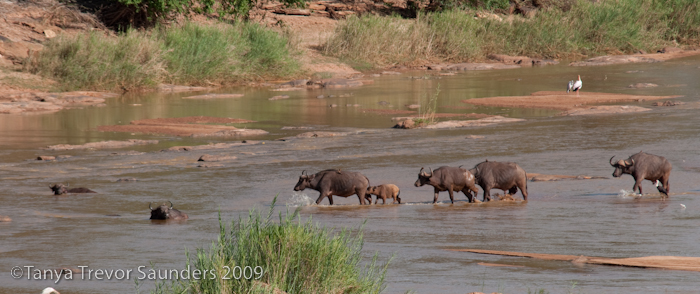
There are a couple of old buffs who have taken up permanent residence in the reeds just below the house. We’re not sure if one of them is sick (it looks a little thin) or whether the pair of them are just old and rightly think that a reed island in the river is a fine place to spend their days. Here’s the sprightlier one enjoying a green mouthful:
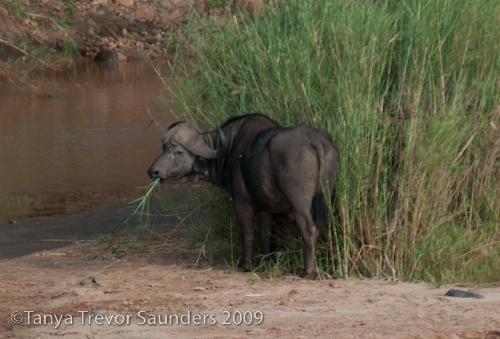
Now if this isn’t a scene that just says “Africa”, I don’t know what is. The elephant herds are back in our area and – you guessed it – they’re back in the reeds too!
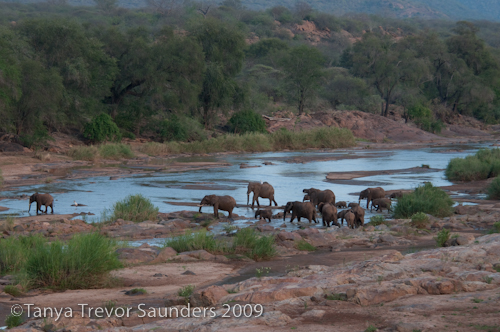
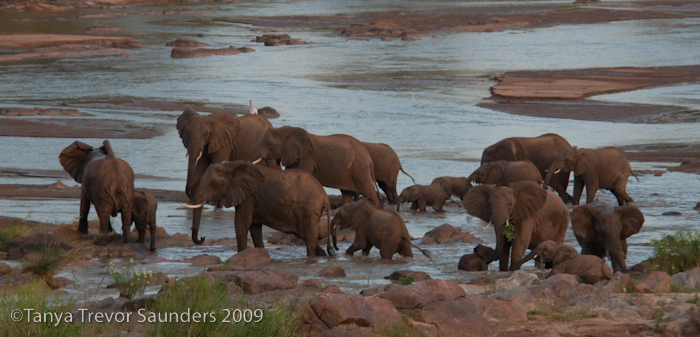
Watching adult elephants help the little ones through difficulties, like here where the baby encounters a pocket of deep water, is always a moving, strangely humbling experience.
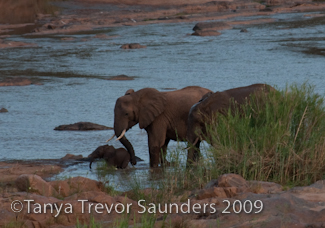
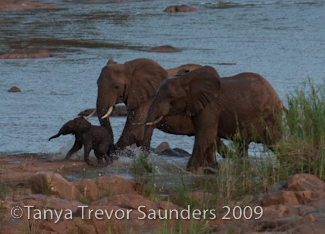
Teenagers will be teenagers… This little chap just couldn’t resist chasing the Yellow-billed Stork…it’s such fun when something is frightened and flies away!
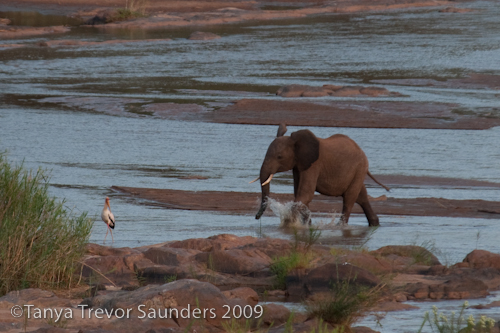
You can see how tall the reeds have grown – they literally swallow up the elephants as they forage around the sick (old?) buffalo…
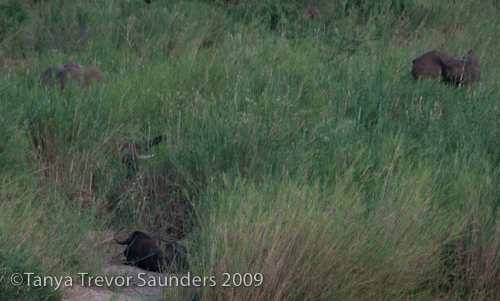
The elephants move on up towards our house, a wonderfully healthy herd with lots of little ones…it’s great to see…
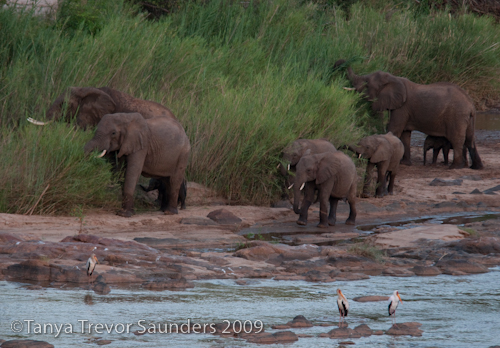
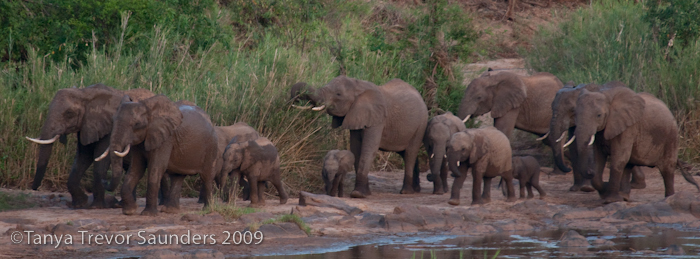
Did I tell you that “our” hippos disappeared from Hippo Bend for 6-7 weeks and only reappeared again mid-February? I’m not sure where they went for we still heard and saw them at night, but could not find them during the day. Anyway, here are our fat friends (reed-munchers too), back in their familiar pool on Hippo Bend…

You can see how wide our sandbanks are, with the river being so low. Our resident herds of impala and waterbuck can be found here daily, nibbling at the new shoots, which sprout up optimistically through the sand.
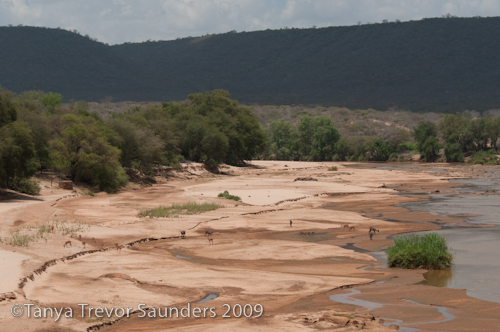
These two waterbuck fawns were having a tremendous game of chase the other day (how they find the energy in this heat, I don’t know). Remarkably, neither of them fell over, despite the angles attained as they cornered:
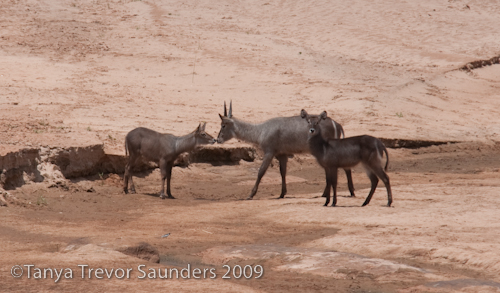
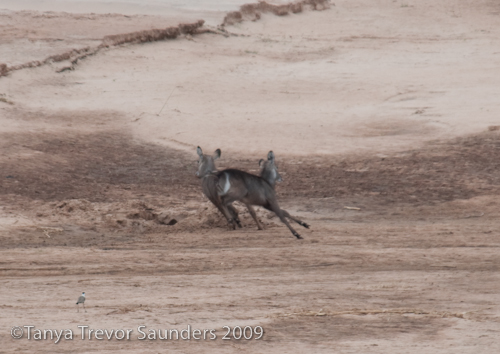
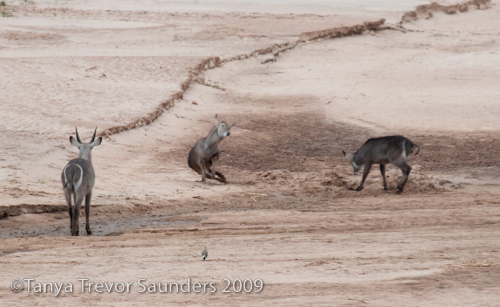
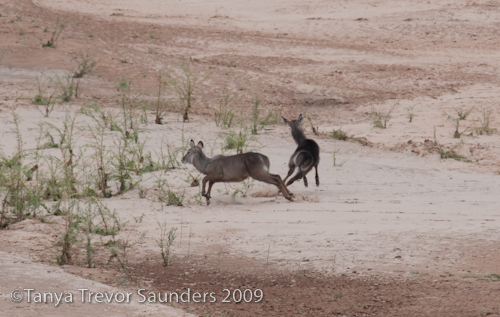
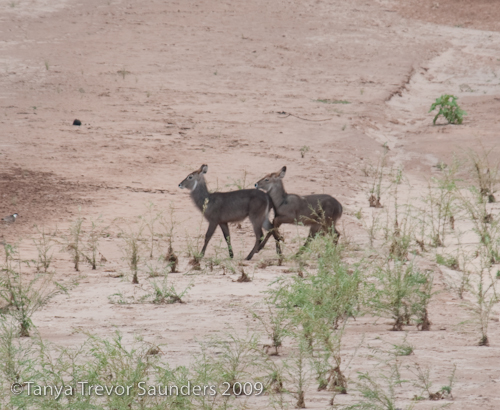
Just as it was a strange rainy season (in other words, it never materialized properly), so it’s been a strange dry season, for we have had a couple of unseasonal rainy days.
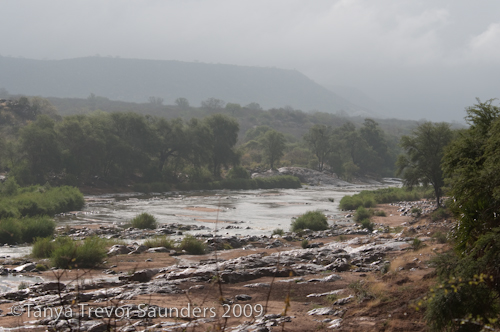
On January 17th, we woke up to a drizzly morning, and the rain lasted all day. This sent the birds into a confused frenzy. The weaver birds started building their nests again. Here’s a male African Golden Weaver, undeterred by the rain, collecting acacia flowers as nest lining:
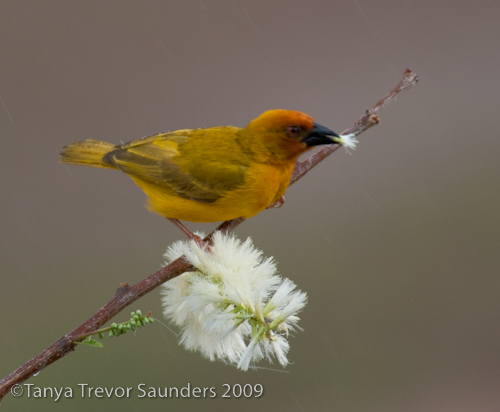
Meanwhile, with high spirits abounding, the Black-headed Weaver and the Sparrows decided to have a barney at the bird table…
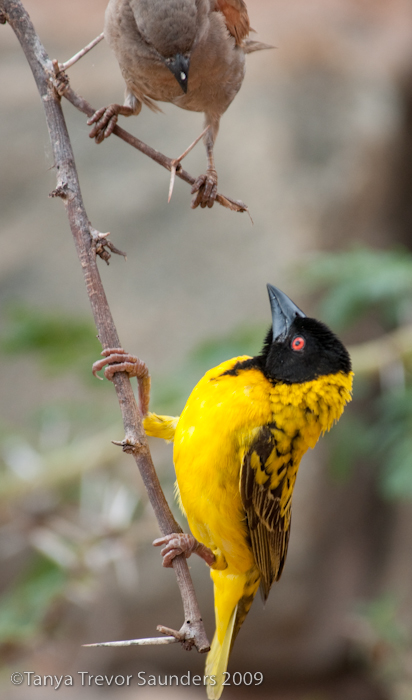
African Paradise Flycatchers are amazing-looking birds. The males come in a variety of different guises. The “standard edition”, if you will, is predominantly rufous with a black head and shocking, electric blue eye-wattle. Its most distinctive feature, however is its inordinately long tail. It’s quite a stunning bird, as you might imagine. Here in Tsavo, though, we get an even more eye-catching variety, which is a subspecies (Terpsiphone viridis ferreti). It’s a white morph, and is like Pegasus of the bird world: a white wonder floating oh-so-elegantly through the undergrowth.
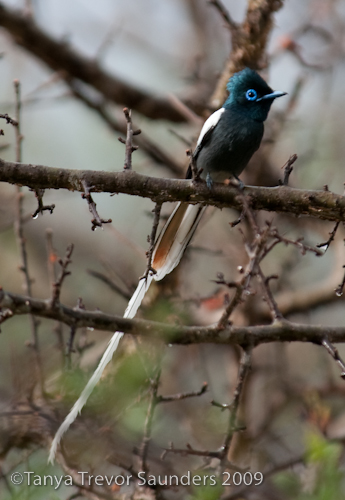
The unexpected rain set the Paradise Flycatchers a-courting. Here’s a white male courting with a rufous female (equally pretty but without the long tail).
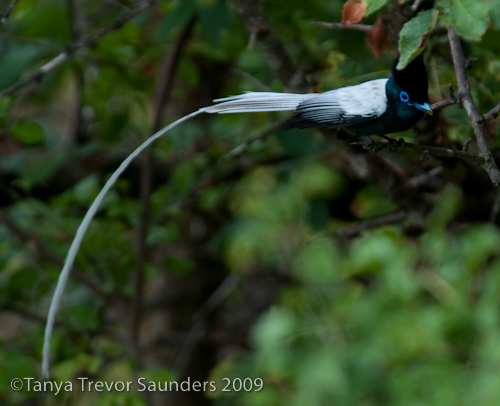
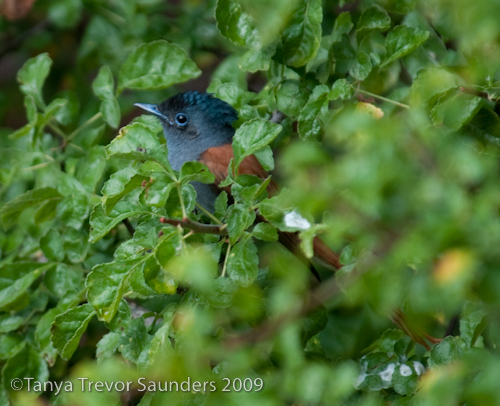
A couple of days later, the Flycatchers had started building a nest, right outside the kitchen in the commiphora thicket. You know me, I was out there like a shot with my camera.
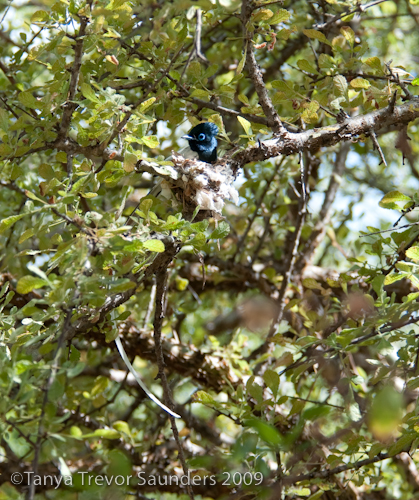 MALE FLYCATCHER ON NEST BY THE KITCHEN
MALE FLYCATCHER ON NEST BY THE KITCHENThe birds were fascinating to watch (and they got accustomed to me very quickly, and came and went without batting an eyelid.) Both male and female were actively involved in building the nest, bringing in pieces of dried foliage, spider webs, feathers and all sorts of bits and pieces to build their little cup nest. Once they had fiddled around and placed their new piece precisely where they wanted it, they would huddle down in the nest and wiggle around, obviously shaping the nest to their precise comfortable dimensions.
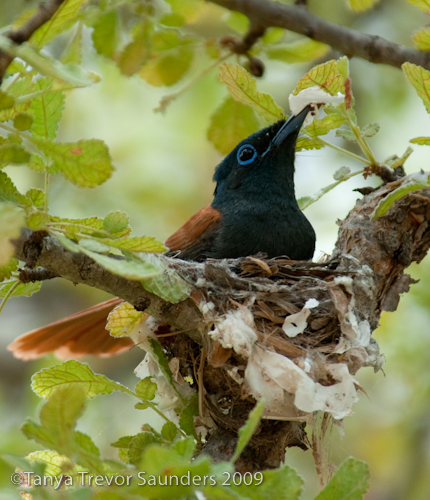 THE FEMALE ARRIVES WITH A PIECE OF NEST BUILDING MATERIAL
THE FEMALE ARRIVES WITH A PIECE OF NEST BUILDING MATERIAL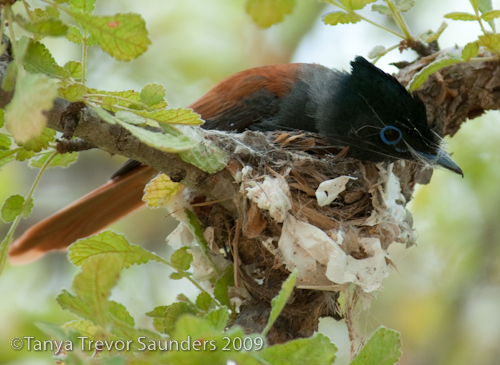 THE FEMALE SHAPING THE NEST BY HUNKERING DOWN AND SHUFFLING HER BODY
THE FEMALE SHAPING THE NEST BY HUNKERING DOWN AND SHUFFLING HER BODY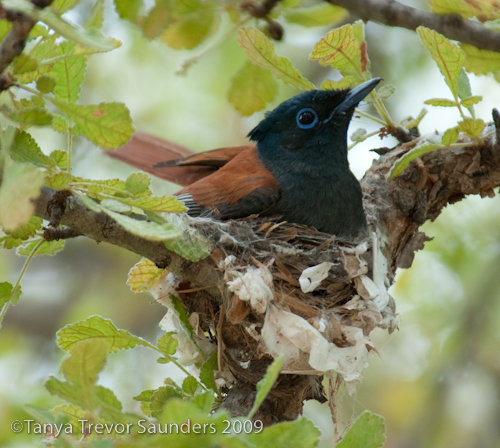 SHUFFLE, SHUFFLE
SHUFFLE, SHUFFLE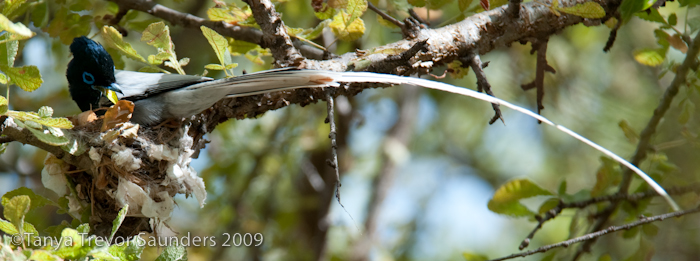 THE MALE PLACES NEW BUILDING MATERIAL ON THE NEST, AND POSITIONS IT EXACTLY WHERE HE WANTS IT
THE MALE PLACES NEW BUILDING MATERIAL ON THE NEST, AND POSITIONS IT EXACTLY WHERE HE WANTS IT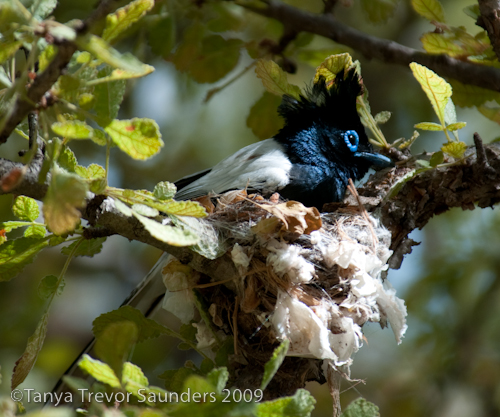 PROUD AS PUNCH!
PROUD AS PUNCH!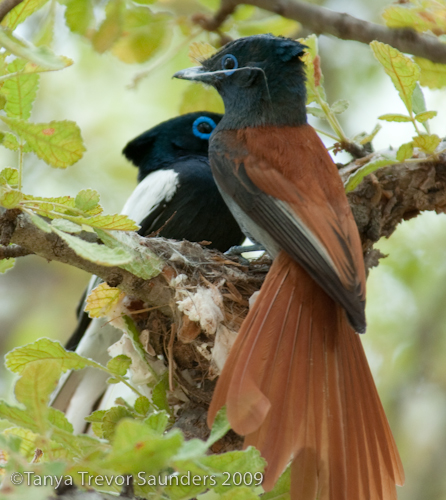 THE MALE TURNS TO LEAVE AS THE FEMALE ARRIVES WITH MORE NESTING MATERIAL
THE MALE TURNS TO LEAVE AS THE FEMALE ARRIVES WITH MORE NESTING MATERIALWhile I was photographing the Flycatchers, this Tree Squirrel kept coming over to see what was going on.
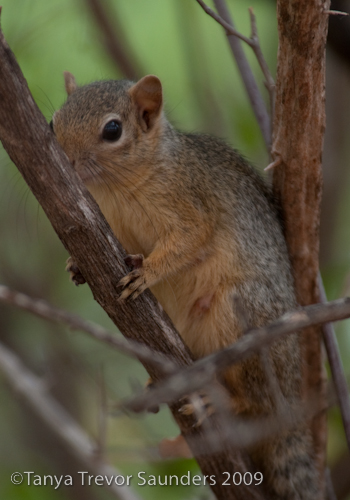
Sadly, the unexpected two days of rain in January ended as abruptly as they had begun, and we were thrust headlong back into the dry season. The Paradise Flycatchers gave up their nesting endeavours, thwarted by the lack of rain.
Then, on the 9th February, out of nowhere, a monstrous storm blew in. I watched the massive weather front sweep in over the Yatta, awed by its power and feeling rather tiny in comparison. What a wind! You cannot imagine the force of it when it hit us! Our chairs were blown like matchsticks across the balcony, one smashing to pieces as it hit the wall. The rain followed the wind, and lashed the house the whole night through.
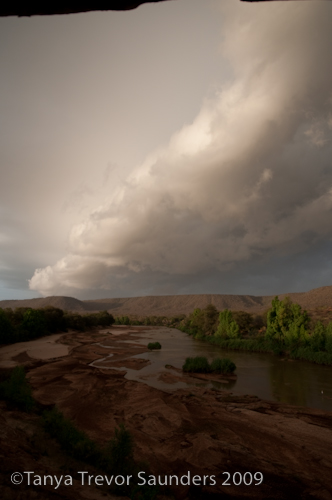 The vicious weather front blowing in...upstream (above) and downstream (below)...
The vicious weather front blowing in...upstream (above) and downstream (below)...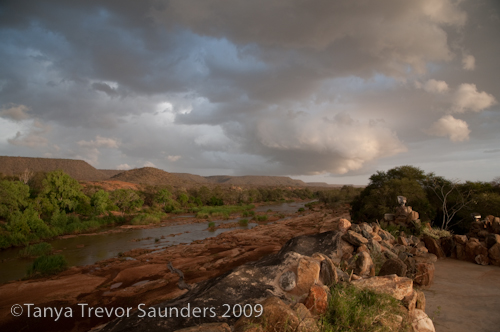
By morning, it was just drizzling, and by the following evening, the rain had gone, and the sizzling heat of the dry season was back.
What this strange weather is doing to the lifecycles of the plants and animals is anyone’s guess. Some wet season flowers are blooming (although this also has to do with the fact we are watering our lawn, which means everything else in the vicinity gets a generous dousing of water too.) Of course, it’s not just the animals and birds that are magical in this part of the world, the plants and flowers are equally breathtaking. Here are a few of our currently blooming beauties to end this quick round-up of Kulafumbi in the dry season…
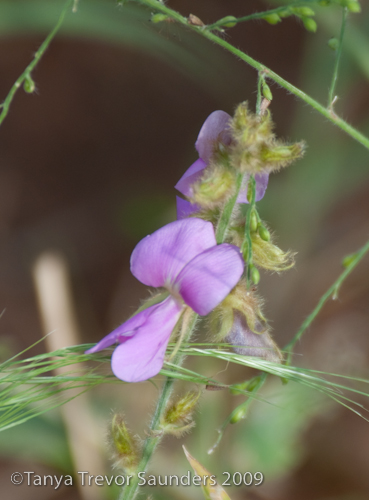
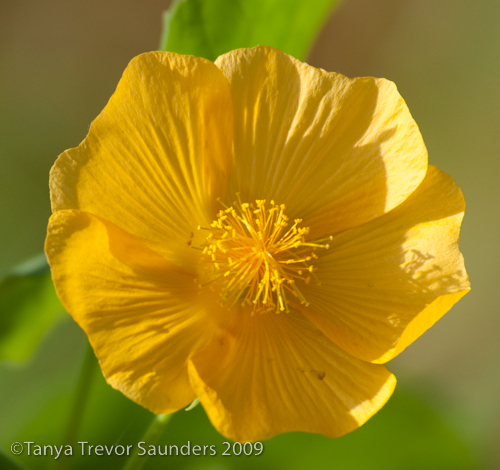
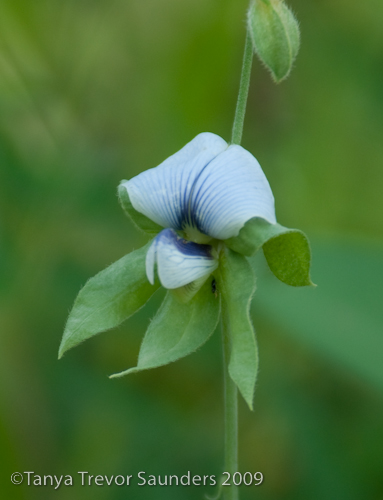
The cheeky vervet monkeys enjoy the lawn being watered too, sneaking up here at any opportunity to nibble the greenery. Here one surveys the outlook from the beach before deciding whether to brave the ascent to the house and the lawn…
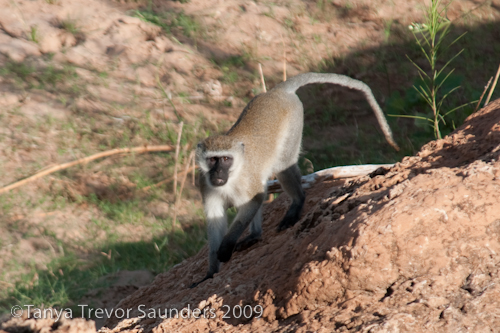
 16 Comments |
16 Comments |  Tanya | in
Tanya | in  Animals with Babies,
Animals with Babies,  Antelope (general),
Antelope (general),  Big Game (general),
Big Game (general),  Birdbath & Bird Table,
Birdbath & Bird Table,  Birds (general),
Birds (general),  Birds (nesting),
Birds (nesting),  Buffalo,
Buffalo,  Elephants,
Elephants,  Flowers,
Flowers,  Garden Trees & Plants,
Garden Trees & Plants,  Hippo,
Hippo,  Hippo Lawn,
Hippo Lawn,  Impala,
Impala,  Monkeys & Baboons,
Monkeys & Baboons,  Plants (general),
Plants (general),  Rain,
Rain,  River Level Low,
River Level Low,  Squirrels,
Squirrels,  Waterbuck
Waterbuck 




Reader Comments (16)
Will write something witty and charming later.....right now I am too flabbergasted and jealous to think of anything....
Those Eles!!! And the beautiful flycatchers! I sat in a camp in the Mara once just watching a Paradise Flycatcher hopping around in a shrub, trying to take pictures of it, but they came out all blurry and dull. And the flowers. They're like the rare orchids you only get on uninhabited bits of scrub land in the UK.
And those big African Skies - oh - to be under those African Skies!
Thanks Nikki.....I'm so glad to share my stories and photos with people like you who obviously love Africa as much as I do. As you can see, it really has been busy around here these past few weeks. Did you see my entry about the leopard? I posted it yesterday too, so you might have missed it if you just came straight to this entry...Unfortunately, I did not have my head screwed on straight when we saw the leopard, and forgot to change the ISO settings on my camera, so the the photos have turned out a bit blurred (it was late evening and the light was fading fast)...nonetheless, you can see what a handsome creature it is!
I did see the leopard. I was just too knocked out by all of your pictures. The images are still great despite the camera setting - just be grateful you had your camera with you!. What luck to see it! I have only seen one once - at Lake Nakuru, lying in that textbook leopard style, languidly drooping over a branch looking quite satisfied with its place in the order of things. They are just the most perfectly formed creatures, aren't they?
I am currently living my African dream vicariously through you and your blog until we get things sorted. Don't think we will ever live anywhere as perfect, though!
As usual, Tanya, simply wonderful! The pictures of the flycatchers are astonishing. And thank you for the pictures of the waterbuck. I knew very little about them before I visited South Africa, but they became a favorite of mine there.
Just back from a holiday in Las Vegas and catching up on my favorite blogs. What a fabulous post to come back to. I loved the vitality of the photos. You make it all come alive.
Your pictures and your writing has moved me to tears, flooding me with memories of my time in Africa. How much I miss it. Surely will stop by agian, thank you for your blog
So great travel blog and nice photos, thanks for sharing,
greetings from Gudauri ski hotels
Tanya, Please come back and start updating your blog more often. I just found it over the weekend and have spent 3 days reading it non-stop. I'm sad that I've come to the end of all you have written so far! You live an amazing life and I am so jealous, but glad that you are sharing it with all of us who visit you page so that we can live vicariously through you! Dana
You sure know how to take great pictures. Thanks for sharing this beautiful country called Kenya.
You sure have a way with words. i must agree that your pictures are worth a thousand words. will be back soon.
Hello All, and thank you for your wonderful comments. I know I have been utterly hopeless keeping my blog updated and I apologise... Writing this blog is one of my favourite pastimes but somehow it always gets pushed to the back of the queue....I'm going to try to rectify this situation as I miss writing my updates too. Thanks to you all, Tanya
We miss your updates, too, but I'm persistent- I'm still checking in once a week to see if you've posted!
Me too, Dana! We live in hope! I guess you've been having the long rains there at the moment so perhaps the wildlife has all gone to ground! Hope you will be back soon. We're still dreaming of the life, hoping to live the dream. xx
After going through your posting I feel like if I could have been tehre at t6hat place. You are right, it's like a heaven. I'm also a nature lover like you and am really worried due to the declining rate of wildlife and jungles. KEep doin the good job
shobin
Cash Online Get Easy cash at your door step
Those pictures of the elephants are great, I am a big fan of these animals in despite of living in a country where we don´t count with them (just in circuses from time to time lol) thanks for sharing the photos
WOW-Great blogsite!!!!!!!!!!!!! I really enjoyed the pictures! Thank you for brightening my day- Francishttp://www.geothermalquestions.net